توضیحات
ABSTRACT
The future Internet of Things (IoT) will enable Internet connectivity for a vast amount of battery- owered devices, which usually need to communicate with each other or to some remote gateways through multi-hop communications. Although ZigBee has become a widely-used communication technology in IoT, Wi-Fi, on the other hand, has its unique advantages such as high throughput and native IP compatibility, despite its potentially higher energy consumption. With the development of IoT, more and more IoT devices are equipped with multiple radio interfaces, such as both Wi-Fi and ZigBee. Inspired by this, we propose a Dual-Interface Dual-Pipeline Scheduling (DIPS) scheme, which leverages an activation pipeline mainly constructed by low-power ZigBee interfaces to wake up a data pipeline constructed by high-power Wi-Fi interfaces on demand, towards enabling multi-hop data delivery in IoT. The objective is to minimize network energy consumption while satisfying certain end-to-end delay requirements. Extensive simulations and prototype-based experiments have been conducted. The results show that the energy consumption of DIPS is 96:5% and 92:8% lower than that of the IEEE 802.11’s standard power saving scheme and a state-of-the-art pipeline-based scheme in moderate traffic scenarios, respectively.
INTRODUCTION
IN the Internet of Things (IoT), a wide variety of devices, such as entertainment electronics, health appliances, wearable gadgets and industrial sensors, are powered by batteries, and need to wirelessly communicate with each other or some remote IoT gateways through multi-hop communications. To realize this, many wireless technologies can be employed. On one hand, the IEEE 802.15.4 standard (or ZigBee) has been proposed and widely used for home and building automation, smart metering and IoT in general, due to its low-cost and lowpower features. On the other hand, the IEEE 802.11 standard (or Wi-Fi) dominates the present-day consumer electronics fields because of its high data rate and long communication range. Any IoT device that connects to smartphones, tablets, digital cameras, TVs and PCs would benefit from Wi-Fi connectivity for reliability and high throughput.
چکیده
اینترنت اواخر آینده (IoT) اتصال اینترنت را برای یک مقدار وسیع از دستگاه های باطری که اغلب نیاز به برقراری ارتباط با یکدیگر و یا برخی از دروازه های از راه دور از طریق ارتباطات چند هاب را فعال می کند. اگر چه ZigBee به یک تکنولوژی ارتباطی به طور گسترده ای در IoT تبدیل شده است، از سوی دیگر، Wi-Fi دارای مزایای منحصر به فردی مانند توان بالا و سازگاری با آی پی بومی است، به رغم مصرف بالقوه مصرف انرژی آن. با توسعه IoT، دستگاه های IoT بیشتر و بیشتر با واسط های متعدد رادیویی مانند Wi-Fi و ZigBee مجهز شده اند. با الهام از این، ما پیشنهاد یک طرح زمانبندی Dual-Interface Dual-Pipeline (DIPS) ارائه می دهیم که یک خط لوله فعال سازی را که عمدتا توسط رابط های ZigBee کم قدرت ساخته شده است، بیدار می شود تا از طریق رابط های Wi-Fi با قدرت بالا بر اساس تقاضا، نسبت به امکان تحویل داده های چند هام در IoT. هدف این است که به حداقل رساندن مصرف انرژی شبکه در حالی که نیازهای تاخیری خاصی را در بر دارد. شبیه سازی های گسترده و آزمایشات مبتنی بر نمونه انجام شده است. نتایج نشان می دهد که مصرف انرژی DIPS 96: 5٪ و 92: 8٪ کمتر از استاندارد IEEE 802.11 است و طرح اصلی مبتنی بر خط لوله در سناریوهای ترافیکی متوسط، به ترتیب.
مقدمه
در اینترنت چیزها (IoT) انواع مختلفی از دستگاهها مانند الکترونیک سرگرمی، لوازم بهداشتی، ابزارهای پوشیدنی و سنسورهای صنعتی بوسیله باطری ساخته می شوند و نیاز به ارتباط بی سیم با یکدیگر یا برخی از دروازه های IOT از راه دور از طریق چند منظوره ارتباطات هام برای درک این، بسیاری از فن آوری های بی سیم می تواند مورد استفاده قرار گیرد. از یک طرف، استاندارد IEEE 802.15.4 (یا ZigBee) پیشنهاد شده است و به طور گسترده ای برای اتوماسیون خانگی و ساختمان، اندازه گیری هوشمند و IoT به طور کلی به دلیل ویژگی های کم هزینه و کم قدرت آن مورد استفاده قرار می گیرد. از سوی دیگر، استاندارد IEEE 802.11 (یا Wi-Fi) به دلیل سرعت بالای داده ها و دامنه ارتباطات طولانی خود، صنایع الکترونیک مصرف کننده امروز را تحت کنترل دارد. هر دستگاه IoT که به اسمارت فون ها، تبلت ها، دوربین های دیجیتال، تلویزیون ها و رایانه های شخصی متصل می شود از قابلیت اتصال Wi-Fi برای قابلیت اطمینان و توان بالا استفاده می کند.
Year: 2018
Publisher : IEEE
By : Hua Qin, Weihong Chen, Buwen Cao, Min Zeng, Jessica Li and Yang Peng
File Information: English Language/ 15 Page / size: 741 KB
سال : 1396
ناشر : IEEE
کاری از : هوآ چیین، Weihong چن، بووان کئو، مین زنگ، جسیکا لی و یانگ پنگ
اطلاعات فایل : زبان انگلیسی / 15 صفحه / حجم : KB 741


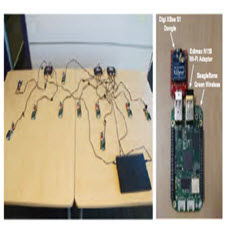

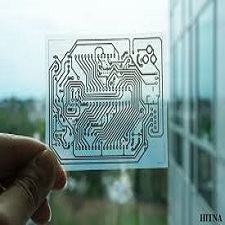

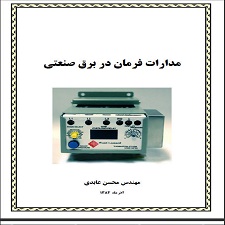

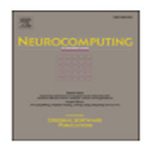
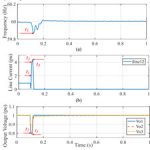
نقد و بررسیها
هنوز بررسیای ثبت نشده است.